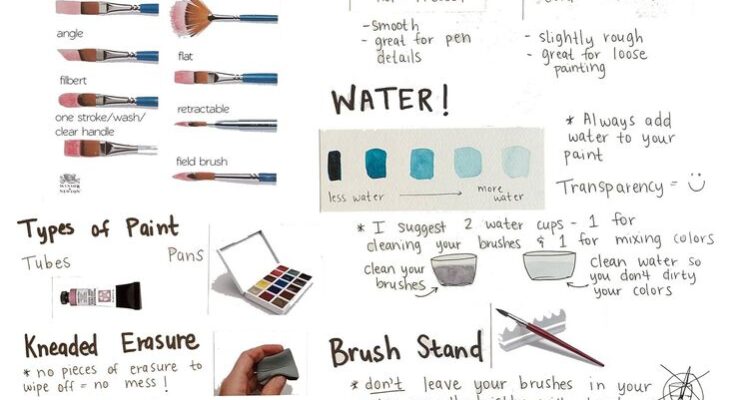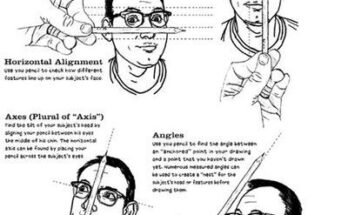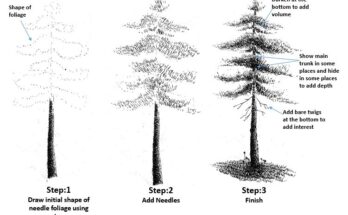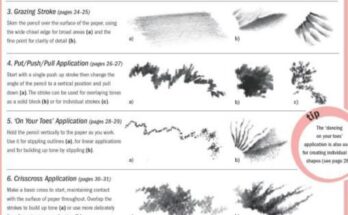Watercolor Tools: A Comprehensive Guide
Dive into the world of watercolor painting with this detailed guide to essential tools, crafted by the talented @emilymarieWatercolors. Perfect for beginners and seasoned artists alike, this tutorial provides an in-depth look at the brushes, papers, paints, and accessories needed to create stunning watercolor artworks. Whether you’re setting up your first kit or looking to refine your technique, this resource offers practical tips and creative insights to elevate your painting experience.

Types of Brushes
Explore a variety of brushes, each suited for different effects:
- Round: Ideal for detailed work and versatile strokes, available in various sizes.
- Designers’ Rigger: Perfect for fine lines and intricate details, great for branches or lettering.
- One Stroke: Excellent for broad, even washes and bold color applications.
- Angle: Useful for edges and controlled blending with its angled tip.
- Filbert: Offers a soft, rounded edge for smooth transitions and organic shapes.
- Fan: Ideal for creating texture, such as foliage or feathery effects.
- Wash: Perfect for large, even washes over broad areas.
- Retractable Handle/Clear Stroke/Wash: Adjustable and clear-handled options for precision and versatility.
- Field Brush: Great for plein air painting with its portable design.
Watercolor Paper
Choose the right paper to enhance your artwork:
- Should be 140 lbs (300 gsm or thicker): Ensures durability and prevents warping.
- 100% Cotton if Possible: Provides superior absorbency and texture.
- Hot-Pressed: Smooth finish, great for pen details and fine lines.
- Cold-Pressed: Slightly rough texture, ideal for loose, expressive painting.
Water!
Master the use of water for optimal results:
- Always add water to your paint: Enhances transparency and flow.
- Transparency = : Achieves the luminous quality unique to watercolor.
- I suggest 2 water cups: One for cleaning brushes, one for mixing colors to keep your palette clean.
Types of Paint
Select your preferred paint format:
- Tubes: Offer rich, concentrated color for easy mixing.
- Pans: Convenient for travel and quick use, providing pre-set colors.
Additional Tools
Enhance your toolkit with these essentials:
- Kneaded Erasure: No pieces of erasure to wipe off—no mess! Perfect for lifting color or correcting mistakes.
- Masking Fluid: Keeps areas white, great for highlights in pupils and whiskers; avoid using an expensive brush.
- Brush Stand: Don’t leave your brushes in a water cup—the bristles will bend; a stand keeps water from dripping into the wooden handle, and dry them 1st before storing upright.
- Painter’s Tape: Taping down your paper may help it to not buckle so much, ensuring a flat surface.
- Paper Towel or Cloth: Use to dry your brush if lifting paint, and helps control the wetness of your brush for precise application.
Positive Attitude!
Embrace the learning process with a positive mindset:
- Watercolor painting is hard!: Acknowledge the challenge and enjoy the journey.
- Even mistakes, like blooms, can be beautiful!: Turn errors into unique artistic features.
Practical Tips for Success
Start by selecting a round brush for detailed work and a wash brush for backgrounds. Use 140 lbs cold-pressed paper for a textured effect, and always mix paint with water for transparency. Keep one cup for clean water and another for mixing to maintain color purity. Apply masking fluid with a cheap brush to preserve highlights, and use a kneaded eraser for clean corrections. Tape your paper to prevent buckling, and use a paper towel to manage brush wetness. Store brushes upright in a stand after drying.
Application and Practice
Gather your brushes, 140 lbs paper, tubes or pans, water cups, masking fluid, eraser, tape, and a paper towel to begin. Sketch your composition, then apply the techniques as outlined, experimenting with brush types and water ratios. Embrace mistakes as part of the creative process, turning blooms into artistic assets.
Posted on July 06, 2025, at 10:45 AM EDT, this guide invites you to explore @emilymarieWatercolors’ tips and start your watercolor journey. Let your positive attitude and these tools guide you to beautiful, expressive artworks!



